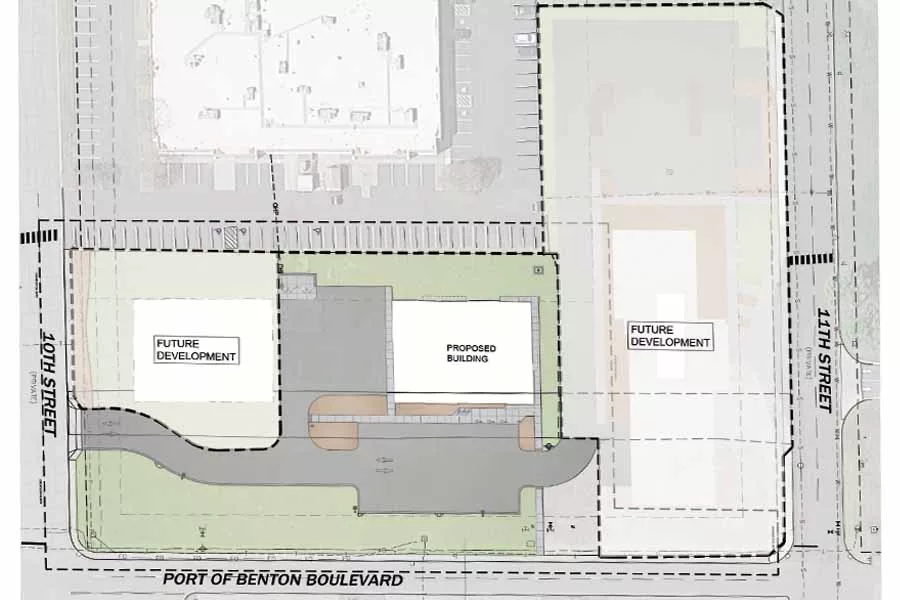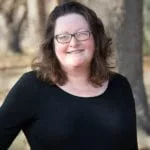
Home » $2 million building to house Hanford history, anchor STEM tourism
$2 million building to house Hanford history, anchor STEM tourism

June 13, 2022
A new building in north Richland will bring the region’s atomic history under one roof and, officials hope, welcome tourists drawn by the community’s accomplishments in science, technology, engineering and math.
The Port of Benton secured a permit to build a $2 million home for the Hanford History Project, currently housed at Washington State University Tri-Cities. It is the first of several buildings that will celebrate science and history at 3251 Port of Benton Blvd. in north Richland.
Future phases will add museum-like spaces and a potential new home for the Manhattan Project National Historical Park and display material related to the USS Triton nuclear submarine as well as the new LIGO Hanford Exploratory Center.
Port officials intended to build the complex as a single development but chose to develop in phases while they wait for grant funding, said Miles Thomas, the port’s economic development director. Last year, it refinanced its debt, freeing up about $4 million to support its vision of a STEM center to welcome visitors and support the history project.
The center will make it easy for tourists to learn more about Hanford and the other science initiatives in the Tri-Cities, said Kim Shugart, senior vice president for Visit Tri-Cities, which regards STEM as a competitive advantage when it comes to attracting visitors.
“There are very few communities that have such a diversity of STEM assets,” she said.
While the port seeks additional financing for the full project, the Hanford History Project needs space for its growing collection of equipment and documents associated with the nuclear site.
The building will give the project’s archivist, curator and other staff private offices as well as space to evaluate materials. Thomas said that means more material will be available for public exhibits.
For example, if the Reach Museum in Richland wanted to mount an exhibit of what the Hanford site looked like in the 1960s, curators don’t have enough space to work in their current quarters but could in the future.
The Hanford History Project collects stories as well as documents and equipment related to the Manhattan Project and Hanford’s subsequent mission to produce plutonium for the nation’s nuclear arsenal, and now, to clean up the legacy of radioactive and toxic materials.
Michael Mays, its director, was traveling and unavailable to comment, but Thomas estimates paper documents represent 25% of the collection. That is growing as the U.S. Department of Energy transfers materials to the archives to support a formal timeline of the Hanford site.
Thomas said the physical items offer an eye-opening glimpse of the work that happened on the top-secret Hanford site. Telephone booths, meteorologic and lab equipment and models have all found their way into the project’s archives, with some exceptions.
“No hot materials,” he said.
The collection even includes Cold War-era materials awaiting declassification.
The city approved the permit for the 7,810-square-foot building in May.
Booth & Sons Construction Inc. broke ground in early June.
Thomas said the initial building is practical in design but echoes the modern design lines of Fire Station 75, the new fire station at Battelle Boulevard and Port of Benton Boulevard.
The location celebrates the Tri-Cities’ non-Hanford science stars too.
The USS Triton Sail Park and the new LIGO Hanford Exploratory Center (LExC) are within an easy distance.
Triton Sail Park, an immediate neighbor, is the final resting spot for the conning tower of the nuclear-powered submarine, which in the early 1960s became the first to circumnavigate the globe almost entirely underwater.
The STEM center will house Triton-related archives and equipment to better tell its story.
Triton reactors, descendants of technology developed at the Hanford site, were decommissioned and deposited at Hanford’s Central Plateau.
The center also will include a kiosk to steer visitors to LExC, which is to the northwest.
When it opens, LExC will tell the story of the science behind the gravity-wave detecting work at twin Laser Interferometer Gravitational-Wave Observatories at Hanford and in Louisiana.
The work netted the three principals the 2017 Nobel Prize for Physics – a duplicate of which is displayed at the center.
Tourism officials believe that taken together, Triton, B Reactor, LExC and the others, are a potent draw for science-minded tourists.
Visitors spent nearly $490 million in Benton and Franklin counties in 2021 and paid nearly $55 million in local and state sales taxes. Tourism numbers are on track to exceed the pre-pandemic record set in 2019.
Visit Tri-Cities, which takes an expansive view of STEM that includes local geology and agriculture as well as the hard sciences, offers family-friendly itineraries and notes they’re suited to residents as well as tourists.
“I’ll bet there are people who live here who don’t know what’s in their backyard,” Shugart said.
Go to: tricities.wsu.edu/hanfordhistory and visittri-cities.com.
Real Estate & Construction Local News
KEYWORDS june 2022





